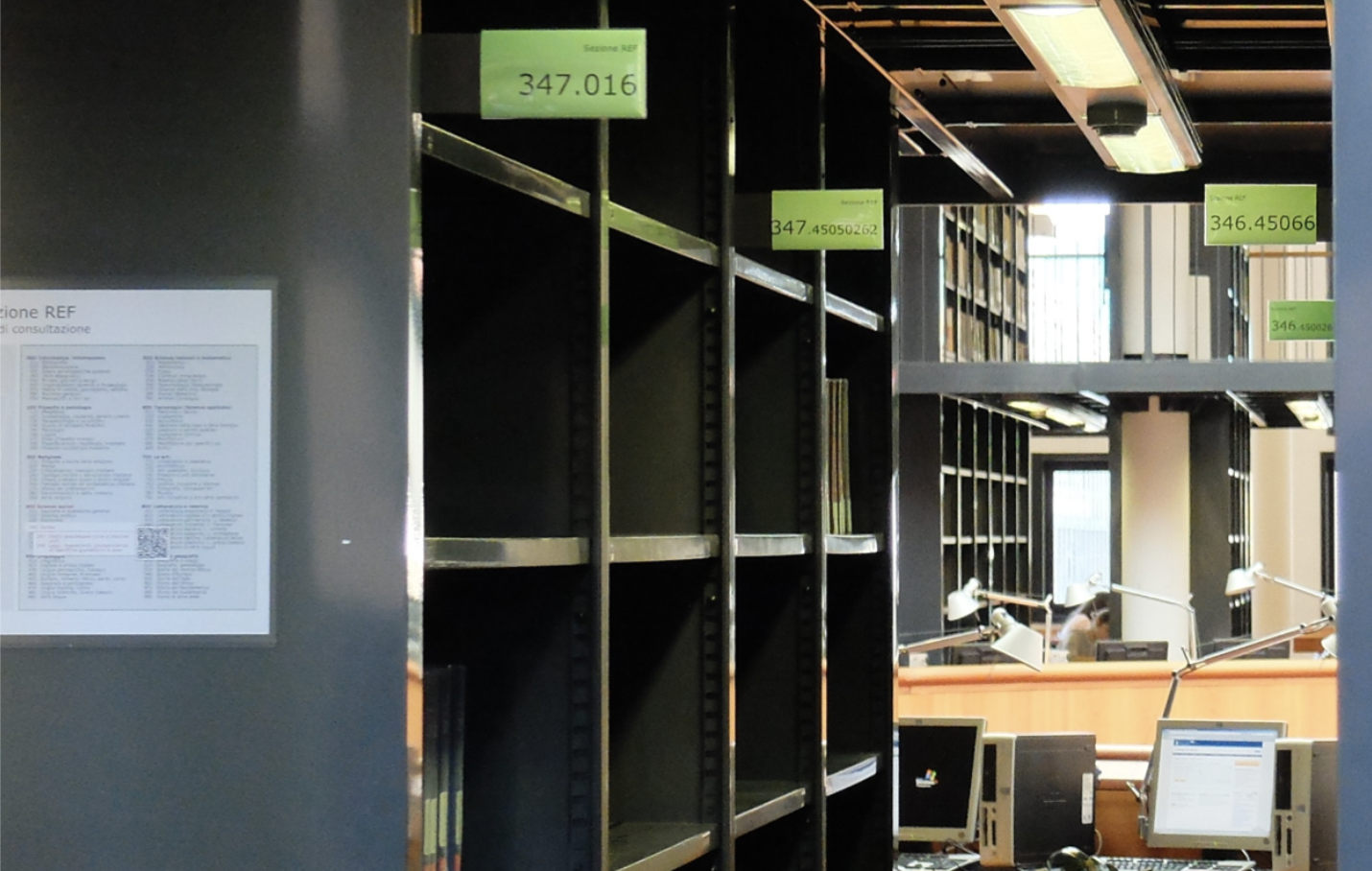An atlas of classification. Signage between open shelves, the Web and the catalogue

Published 2014-05-18
Keywords
- Class indexing; Cross-media communication; DDC
How to Cite
Copyright (c) 2014 Andrea Fabbrizzi

This work is licensed under a Creative Commons Attribution 4.0 International License.
Abstract
This paper intends to present the in-progress project for the signage system of the Dewey-classified shelves in the Library of Social Sciences at the University of Florence. To make the classified arrangement effective, a signage system must clarify complexity, that is it must orient users towards the logic behind the shelf arrangement, presenting in a visible and understandable way the entities and the relationships which appear in class indexing.
This signage is based on cross-media communication and integrates the library's communication means at various levels, both in the context of the same medium and between different media: between the information signs on the end-caps of the shelves, between these information signs and the library website, between the library website and the catalogue. Mobile devices such as tablets and smartphones are particularly suitable for this integrated system, because they give the possibility to access the Web while moving from shelf to shelf. The QR codes allow a link between the Dewey-classified shelves and the catalogue directly from the information signs.
Metrics
References
- Casson, Emanuela, Andrea Fabbrizzi, and Aida Slavic. “Subject Search in ItalianOPACs: an Opportunity in Waiting?”Subject Access: Preparing for the Future. Berlin: De Gruyter Saur, 2011. 37–50. DOI: 10.1515/9783110234442.37. (Cit. onp. 103).
- Fabbrizzi, Andrea. La segnaletica per lo scaffale aperto classificato: progetto per la Biblioteca di Scienze sociali dell’Università di Firenze. 2006. http://www.aib.it/aib/contr/fabbrizzi1.htm. (Cit. on p. 101).
- Galluzzi, Anna. “Evoluzione del sapere e organizzazione delle raccolte: il caso dellabiblioteca pubblica”. Nuovi annali della Scuola speciale per archivisti e bibliotecari 22.(2008): 227–260. (Cit. on p. 115).
- Gnoli, Claudio. La biblioteca semantica: tecniche e metodi per applicare l’organizzazionedella conoscenza alla gestione dei servizi. Milano: Editrice Bibliografica, 2007. (Cit. onp. 101).
- Natalini, Adolfo. “La biblioteca del polo socio-economico e giuridico dell’Universitàdi Firenze a Novoli: relazione di progetto”. Architettura della biblioteca e identità universitaria: atti del convegno, Firenze, 28-29 settembre 2006. Milano: SylvestreBonnard, 2007. 87–95. (Cit. on p. 104).
- Resmini, Andrea and Luca Rosati. Pervasive Information Architecture: Designing Cross-Channel User Experiences. Burlington, MA: Morgan Kaufmann, 2011. (Cit. onp. 118).
- Rosati, Luca. “Ecosistemi fisico-digitali: progettare e produrre per i media integrati”. Problemi dell’informazione 38.1. DOI: 10.1445/74592. (2013): 12–24. (Cit. on p. 118).
- Stagi, Tiziana. “Il progetto di adeguamento delle collezioni”. Architettura della bibliotecae identità universitaria: atti del convegno, Firenze, 28-29 settembre 2006. Milano: Sylvestre Bonnard, 2007. 286–303. (Cit. on p. 105).




